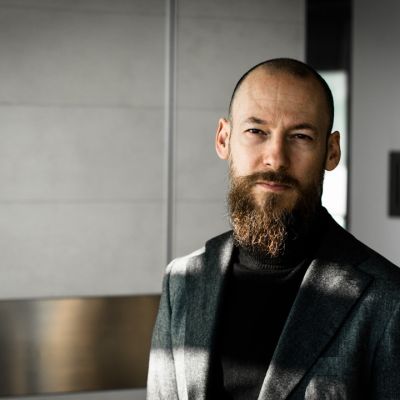When you’re looking in the mirror every day, it’s hard to see the minute changes that make up the hair growth cycle. But it’s a much more fascinating process than it appears. There are four distinct phases that your hair goes through to grow. Read on to learn all about them and how they can keep your hair healthy and growing throughout all four.
The Four Stages of Hair Growth
The four stages of hair growth are the anagen phase, the catagen phase, the telogen phase, and the exogen phase. While most of your hair is on the same page, not every follicle goes through the same phase simultaneously. Understanding these stages can help you make informed decisions on keeping your hair and scalp healthy and addressing hair loss.
1. Anagen Phase: The Active Growth Stage
Think of this phase as the hardest working one. It’s long, vital, and works overtime for you. For two to seven years, your hair follicles produce new hair using a rich blood supply as fuel to nourish the roots. About 85%-90% of your scalp hairs are in this phase, growing steadily, but your hair doesn’t grow like your friend’s or your cousin’s. Genetics and hormone levels play a significant role in determining how long your hair can grow. Supporting the anagen stage with proper care is key to helping you achieve healthy hair growth.
2. Catagen Phase: The Transitional Period
The catagen phase is brief, about two weeks when all hair growth stops. Don’t worry — it’s totally natural and necessary. Disruptions to this phase lead to thinning or delayed growth. This phase requires that the hair shaft detach from the nutrient supply. Then, the follicle begins to shrink.
3. Telogen Phase: The Resting Stage
Now, the hair rests. For three to four months, the follicle goes into a bit of hibernation, so to speak. About 10%-15% of your individual hairs are resting in the telogen stage at all times. Factors like scalp health and stressors extend this phase, so if you feel stagnant for longer than average, you should see a hair loss expert.
4. Exogen Phase: Shedding of Hair
If you thought shedding hair was a reason for panic, you’ll be relieved to hear it’s just a phase of hair growth. The exogen phase marks the very end of the cycle, during which old hairs are shed, clearing the way for new ones. You may lose 50-100 hairs a day. However, if you’re seeing more than that, the shedding could point to other issues in your hair growth cycles. Hair experts at HairClub can offer personalized solutions to hair loss to address your specific needs during this stage and beyond.

Factors Affecting Hair Growth Cycle
For better and sometimes worse, you heavily influence the changes in your hair. Here are some elements that affect your hair’s cycles:
Hormonal Changes
Hormones affect so much in the body, from weight to sleep and beyond. It makes sense that they also significantly affect how hair follicles function. Shifts in hormone levels commonly occur during pregnancy, menopause, or as a result of thyroid disorders, which can alter the hair growth cycle. In fact, conditions like Hashimoto’s disease—a common thyroid disorder—can contribute to hair thinning. Learn more about the connection between Hashimoto’s disease and hair loss here. If you’re experiencing unexpected changes in your hair, it’s always a good idea to check your hormone health with a professional.
Nutritional Influences
Your hair needs a steady supply of essential nutrients to grow strong and healthy. When that supply is diminished or cut off altogether, your follicles can become weak or stuck in the telogen phase. To provide your scalp with biotin and iron, eat a balanced diet of protein, healthy fats, and vitamins that maintain healthy hair growth.
Scalp Health
Thriving hair starts at the root — in this case, the scalp. Dandruff, excessive oil, or inflammation can disrupt the blood supply to the hair follicles, keeping them from growing. Treat your scalp as you do the skin on your face, regularly cleansing, exfoliating, and hydrating to improve circulation and allow your scalp hairs to flourish.
Supporting your hair growth cycle can mean balancing a few variables, such as hormones, nourishment, and scalp care. Addressing these factors will start to create the ideal environment for your hair to thrive at every stage.
Impact of Disruptions in the Hair Growth Cycle
The hair growth cycle is delicate and susceptible to even small disruptions. These disruptions lead to noticeable changes, but the great news is that changing your hair care will also significantly affect your hair for the better. Here’s a closer look at what disruptions to look for and why:
Causes of Hair Loss
A lot can go wrong internally and externally to disrupt the cycles of hair growth. There are several causes of hair loss. The hormonal influences discussed above can shrink hair follicles—a process known as hair miniaturization—especially if you have increased levels of dihydrotestosterone (DHT). Nutritional deficiencies, stress, and some medications can also throw the cycle off track, leading to extended telogen phases or premature shedding during the exogen phase. Dandruff or psoriasis can also cause inflammation, which impedes the natural flow of the cycle by restricting blood supply to your follicles.
Common Hair Loss Conditions
Disruptions often manifest as conditions like androgenetic alopecia (male or female pattern baldness), which is driven by a genetic sensitivity to DHT. Telogen effluvium, on the other hand, happens when a significant number of hairs enter the resting phase due to stress, illness, or other triggers, causing excessive shedding. Alopecia areata, an autoimmune condition, can lead to patchy hair loss because the immune system mistakenly attacks individual hair follicles.
Each of these conditions disrupts the balance of the cycles. Luckily, many of them are manageable and can be treated with the right care.
Maintaining Hair Health Through the Growth Cycle
Hair care isn’t just about what you do during the “growth” phase of the hair growth cycle. It’s about consistent daily practices that support every stage. By focusing on healthy habits and proactive measures, you can help your hair thrive.
Effective Hair Care Practices
Start with making small changes and you’ll already see a big difference. Here are some of the best practices to get you started:
- Wash your hair regularly to keep oil buildup in check, keeping follicles clear and healthy.
- Use gentle, sulfate-free shampoos that won’t strip your hair of natural oils.
- Incorporate scalp massages to stimulate blood supply and encourage growth.
- Avoid harsh styling practices like frequent heat use or tight hairstyles which can weaken your hair shaft and lead to breakage.
- Keep your hair and body hydrated. Drink water and use moisturizing products to support healthy hair growth by preventing dryness and brittleness.
Proactive Steps for Hair Regrowth
If you’re experiencing hair loss, early intervention is your friend. You can start with supplements like biotin, zinc, and other vitamins to fill gaps in your diet and strengthen your hair, or consider treatments like laser therapy for follicle stimulation.
At HairClub, we offer tailored solutions for every stage of hair loss. Whether you’re looking to prevent hair loss or kickstart your anagen phase, our personalized regrowth plans are here to help. Schedule a free consultation with a hair loss expert and take the first step toward healthier hair today.
FAQs
How to know if inflammation is causing hair loss?
Inflammation of the scalp can disrupt the hair growth cycle and lead to hair loss. A hair loss expert can perform a detailed scalp analysis to identify inflammation and recommend treatments to stop hair loss and return patchy areas to health.
Why do I have so much new hair growth on my head?
This is often a positive sign that your hair is entering the anagen phase after a period of rest in the telogen phase. You might see extra hair growth after recovering from stress, illness, or other disruptions.
Does hair grow back after falling out from roots?
Hair often does grow back after falling out from the roots if the follicle remains healthy. However, if the loss is due to permanent conditions like scarring alopecia or severe damage to the follicle, regrowth may be limited. Consult with a hair loss expert to determine the cause and extent of the damage and explore solutions together.
Schedule a free consultation with a hair loss expert and take the first step toward healthier hair today.





